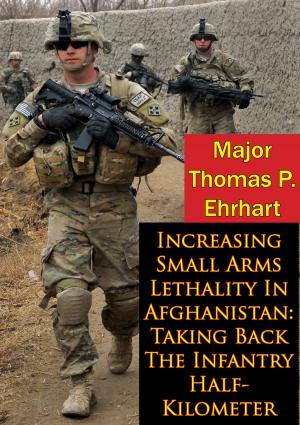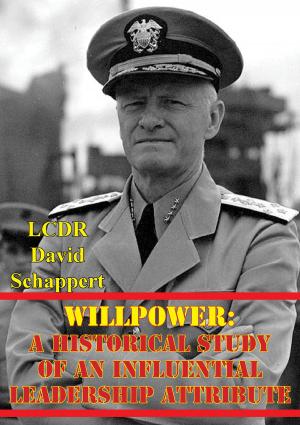9/11 And Canadian Special Operations Forces: How ‘40 Selected Men’ Indelibly Influenced The Future Of The Force
Nonfiction, History, Middle East, Persian Gulf War, Military| Author: | Lt.-Col Stephen J. Day | ISBN: | 9781782895114 |
| Publisher: | Tannenberg Publishing | Publication: | August 15, 2014 |
| Imprint: | Tannenberg Publishing | Language: | English |
| Author: | Lt.-Col Stephen J. Day |
| ISBN: | 9781782895114 |
| Publisher: | Tannenberg Publishing |
| Publication: | August 15, 2014 |
| Imprint: | Tannenberg Publishing |
| Language: | English |
In less than two decades, Canadian Special Operations Forces (CANSOF) grew from a 100-man hostage-rescue unit to a 2,500-person Command capable of prosecuting missions across the special operations spectrum. The seminal event causing this transformation is examined within this monograph. The common narrative explaining the rise of Canadian Special Operations Forces Command (CANSOFCOM) states that 9/11 is the seminal event. Herein, a new narrative is proposed. One that posits the 2001-02 deployment of a 40-man CANSOF Task Force to Operation Enduring Freedom (OEF) is the seminal event. This Task Force’s disproportionately positive impact on the Canadian national scene caused key national actors to take note of the strategic utility of special operations forces. Twenty-four interviews with defence and security subject matter experts from the political, federal public service, military and academic domains, as well as two leading Canadian national journalists provide unique insights into CANSOF’s ascendancy. Analyzing published defence policy since World War II and Canada’s 20-year experience with her national counter-terrorism task force prove two key points. First, defence policy is extant, consistently expressing the requirement for an irregular capability for the conduct of operations in asymmetrical environments. Therefore, 9/11 did not change Government of Canada (GoC) expectations per se. Second, the one-year CANSOF OEF commitment produces a highly positive national strategic effect for the GoC. As a result, in less than a decade CANSOF transitions from a single, domestically focused, national counter-terrorism task force to where today CANSOFCOM is employed as a distinct element of national military power. This transformation from a single strategic resource to a strategically relevant, ‘hard power’ option currently provides the GoC with greater strategic choice when she looks to deploy military forces alongside her allies.
In less than two decades, Canadian Special Operations Forces (CANSOF) grew from a 100-man hostage-rescue unit to a 2,500-person Command capable of prosecuting missions across the special operations spectrum. The seminal event causing this transformation is examined within this monograph. The common narrative explaining the rise of Canadian Special Operations Forces Command (CANSOFCOM) states that 9/11 is the seminal event. Herein, a new narrative is proposed. One that posits the 2001-02 deployment of a 40-man CANSOF Task Force to Operation Enduring Freedom (OEF) is the seminal event. This Task Force’s disproportionately positive impact on the Canadian national scene caused key national actors to take note of the strategic utility of special operations forces. Twenty-four interviews with defence and security subject matter experts from the political, federal public service, military and academic domains, as well as two leading Canadian national journalists provide unique insights into CANSOF’s ascendancy. Analyzing published defence policy since World War II and Canada’s 20-year experience with her national counter-terrorism task force prove two key points. First, defence policy is extant, consistently expressing the requirement for an irregular capability for the conduct of operations in asymmetrical environments. Therefore, 9/11 did not change Government of Canada (GoC) expectations per se. Second, the one-year CANSOF OEF commitment produces a highly positive national strategic effect for the GoC. As a result, in less than a decade CANSOF transitions from a single, domestically focused, national counter-terrorism task force to where today CANSOFCOM is employed as a distinct element of national military power. This transformation from a single strategic resource to a strategically relevant, ‘hard power’ option currently provides the GoC with greater strategic choice when she looks to deploy military forces alongside her allies.

![Cover of the book Conquering The Night — Army Air Forces Night Fighters At War [Illustrated Edition] by Lt.-Col Stephen J. Day](https://www.kuoky.com/images/2015/november/300x300/9781786252371-lfdB_300x.jpg)













